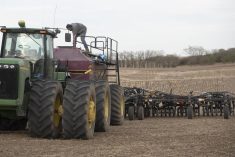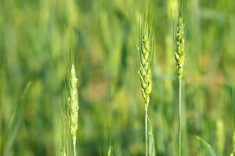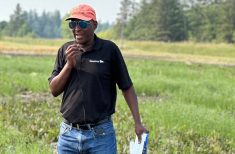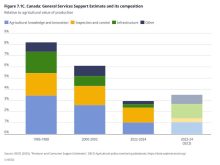Early soil testing across much of Manitoba shows that most samples have low to very low nitrogen levels.
“That is basically informing growers that for next year’s crop, a healthy high rate of nitrogen may be required,” says Manitoba Agriculture soil fertility specialist John Heard. “It’s a far cry from last year when many samples were testing more than 100 pounds of residual nitrogen and very few in that very low category (under 20 lb./acre).”
Heard says there are likely several reasons.
Read Also

Still hard to predict precise fertilizer payback
Despite decades of advances, international research finds no clear answer for where and when adding nutrient will fail to boost growth.
“I’m presuming that farmers backed off on nitrogen rates this year based on their soil testing done in the fall,” he says. As well, wet conditions last spring and summer were conducive to leaching.
Heard says he measured leaching losses of 30 lb./acre even on fields with heavy clay soils where it isn’t normally as big an issue. On sandy soils, it was much worse.
“We noticed 65 pounds of nitrogen move out of the rooting zone.”
His scouting of corn fields grown on sandy soil reinforced his thoughts on leaching losses.
“I’m seeing nitrogen deficiencies from the bottom leaves right up to the cob,” says Heard. That suggests farmers probably did not account for those losses with sufficient nitrogen applications.
“Again, this is an artifact of that high rainfall and water moving through the soil profile when nitrogen is in the nitrate form.”
[RELATED] Soil testing even more crucial after drought year
Heard also says reports of good wheat fields indicate that much of the nitrogen was taken up by those crops. That’s a possible upside to what’s being seen. With good yields and relatively high grain prices, farmers will be better positioned to deal with high fertilizer costs.
“It may well be that they can still purchase the same amount of fertilizer with a bushel of crop as before,” says Heard. “It’s not coincidental that they go hand in hand.”
Nitrogen costs are high so soil testing can give farmers valuable insights when developing their fertilizer strategy. Traditionally, testing is done when the soil temperature reaches five or 10 C.
“By that time, mineralization changes in the soil have slowed down and levels are rather static for nitrogen so we’ve tended to say spring is the best time to soil sample – close to when the crop is going to use it,” he says.
However, soil temperatures are now approaching the target range, and there are advantages to fall soil sampling.
“A big thing is that it gives us time to make fall fertility decisions, either for applications or purchasing of fertilizer,” Heard says.
Fertilizer prices more than doubled between spring 2021 and spring 2022. And, while prices eased during the summer, they are on the rise again.
“This has tended to make things a little quiet at the ag retailer office these days because farmers are seeing that the prices are moving up again,” says Heard.
Regular soil testing is essential “in order to deal with high-priced inputs and come up with appropriate recommendations so we can optimize returns for that crop.”
It allows agronomists and farmers to track levels over time and see how well a fertilizer strategy is working and it is also environmentally responsible.
“For several years, we’ve been focused on phosphorus management,” says Heard. “Now, with global warming concerns, we’re focused on nitrogen management. So doing soil sampling is the responsible thing to do to make sure we’re targeting the right amount of nutrients.”
















